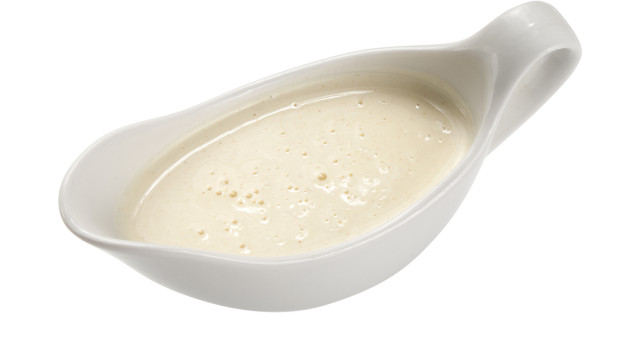White Sauce

A Little Personal History:
If you make your own sauces, you need to know how to make White Sauce, one of the “Mother Sauces”
White Sauce is a common name for the classic Béchamel Sauce – one of the “Mother Sauces” of French Cuisine. Béchamel Sauce is rarely used on its own; but rather as the base for other sauces or as a binding agent (i.e. Potato gratin). White Sauce, on the other hand, is frequently used as a finished sauce and therefore more highly seasoned than is Béchamel. Regardless, the procedure for making both is the same.
Chef Lars
| Prep Time | 5 minuters |
| Cook Time | 20 minutes |
| Passive Time | 1 hour |
| Servings |
Cups
|
Ingredients
- ½ cup roux white
- 2 cups whole milk
- ½ teaspoon onion salt
- ½ teaspoon ground white pepper
- pinch fresh ground nutmeg
- 1 Bay leaf
Ingredients
|
Instructions
- Take out roux from refrigerator and let sit for about an hour or until at room temperature.
- Over medium heat, in a medium sauce pan, heat milk till it simmers (not to boil), add the roux and whisk.
- As roux and milk begin to blend, whisk quickly until smooth.
- Add the seasonings and cook over medium-low heat, stirring frequently. Simmer the sauce until it lightly coats the back of a spoon.
- Remove the bay leaf, taste and adjust for salt and pepper, and serve.
Recipe Notes
Advanced Preparation:
- White sauce can be made ahead-of-time: remove from the heat and press a piece of plastic wrap onto the surface of the sauce to prevent it from forming a skin. Reheat over a low flame, stirring constantly, until it barely simmers.
Tips, Notes, and Variations:
- The seasonings can be adjusted according to individual taste and the intended use: some dishes will require a more highly seasoned sauce, others a milder concoction.
- The flavor can also be altered by adding various herbs (mustard seed, parsley, celery leaves, thyme, etc.) along with the other seasonings. Generally additions should be strained from the sauce prior to use – straining would not apply, for instance, to traditional parsley sauce, typically served with fish, in which the green of the herb is an integral ingredient. Keep in mind that the sauce should be mildly flavored and that any additions should complement the finished dish, not overpower it.
- In the event that lumps have formed in your sauce, simply pour through a medium strainer before serving.


You must log in to post a comment.